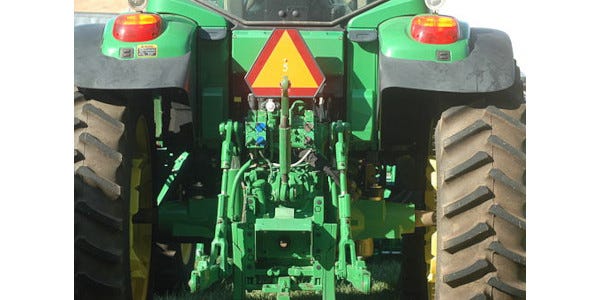Four tips to avoid implement entanglement

Implements that use augers and power take-offs (PTOs) are an essential part of farm work. They are also incredibly dangerous. Entanglement in an auger or PTO can happen in the blink of an eye and can lead to injury, amputation, and even death.
No matter how many times someone has worked with this equipment, it is still as dangerous as the first time.
Below are four tips to help prevent entanglement.
1. Make sure safety equipment is properly attached and maintained.
Modern farm equipment comes standard with shields, guards, warning stickers, and other components intended to keep the operator safe. It is crucial that these items stay on the equipment and are replaced with they become worn or broken.
Auger cages and PTO shields must be attached whenever the equipment is in use. If a guard needs to be removed for a repair or some other reason, it should be replaced as soon as the repair is made. Older equipment may need to be retrofitted with guards if it doesn’t have any.
There is a large variety of guards and shields available for equipment and the investment in them pales in comparison to a hospital bill or funeral.
RELATED: New harvest season, new ways to think about safety on the farm
RELATED: Alliant Energy provides tips to keep farmers safe and avoid overhead power lines
RELATED: Turn signals key to safety on roadways
RELATED: Farm safety yields important, life-saving results
RELATED: National datasets fall short in capturing agricultural production deaths
2. Wear appropriate clothing.
Many entanglements have been caused by improper or ill-fitting clothing. When working with augers and PTOs, clothing should fit close to the body and not have any loose strings or pieces of fabric. Closed-toe shoes should be worn, and laces tucked in. Tie back long hair and remove any jewelry. Dressing for safety is a simple way to avoid an accident.
3. Use lockout tagout procedures.
Lockout tagout should be used whenever equipment needs repair. The procedure ensures equipment is powered off and not able to be powered on until a repair or maintenance is complete. Power sources should be locked and rendered inoperable, and a tag placed on the lock identifying who shut the equipment down. The person who locked and tagged the equipment should be the only one who unlocks the equipment after a repair or maintenance is completed.
The lockout tagout process ensures that equipment is not used while it’s in a potentially hazardous state. Lockout tagout procedures can be conducted with padlocks, locking carabiners, or locking clasps.
Tags should be bright and clearly state that the equipment is currently shutdown and not available for use. Using lockout tagout can help prevent others from using equipment that is currently not in a safe working state.
4. Never work alone.
Whenever work is being done with equipment that has an auger or PTO, there should be another person in the area. If something were to go wrong, this person can shut off equipment, call for help, and tend to someone who has been injured. Having this policy in place on the farm can save lives.